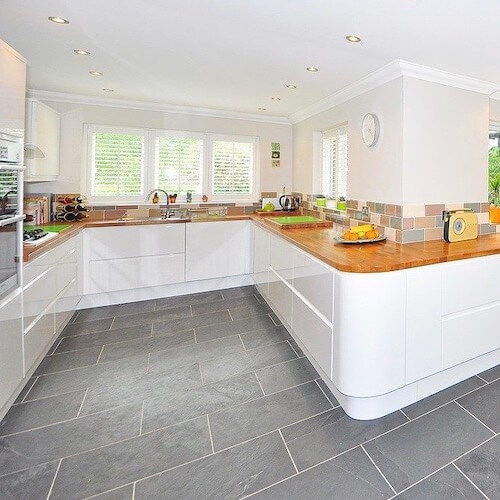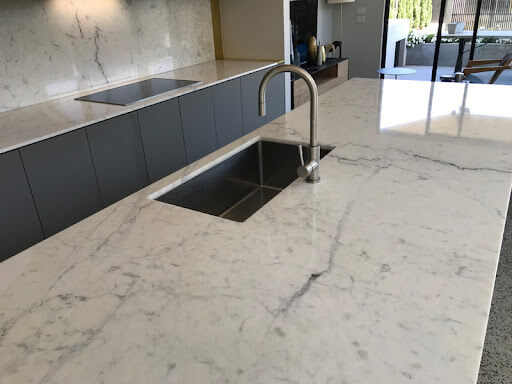Introduction
Stone restoration is not only an exercise in personal taste and creative expression, it is a practice deeply entrenched in cultural preservation and environmental sustainability. Every chip, crack, or stain marks the passage of time and narrates a history that often runs deeper than we can comprehend. A well-restored stone surface not only adds aesthetic appeal to your home, but it also contributes to the broader narrative of preserving human heritage.
In the age of disposable fashion and temporary trends, the enduring allure of stone defies the ephemeral. The charm lies in their age-old story, their resilience, and the intriguing fact that — like us — no two are similar. With their authentic dappled hues and intriguing textures, natural stone brings a touch of the outdoors inside.
The Beauty of Stone: Versatility, Durability, and Elegance
Stone has always been a generous contributor to architectural grandeur and interior design. Its versatility allows it to adapt to different styles, settings, and periods. From the imposing marble statues of ancient Rome to the rustic slate of a country cottage, stone has the unique capacity to embody both luxury and simplicity.
But the beauty of stone extends far beyond its visual appeal. This natural material is applauded for its durability and wear resistance. Upheld by millennia of geological activity, stone has withstood the test of time further augmenting its acceptance in design circles. But like anything in nature – trees, mountains, rivers – every stone has a life and needs care to sustain its beauty. And here, the art of stone restoration comes into being.
Understanding the Nature of Stone
Whenever you are getting involved with stone restoration, a basic understanding of different stone types is crucial. The four main types of stone used in construction and decoration are marble, limestone, sandstone, and granite. Each has its appeal, advantages and unique characteristics which influence their response to restoration methods.

Marble, for instance, is revered for its opulent appeal, but it is highly vulnerable to etching and staining. Limestone is versatile and budget-friendly but is more porous and susceptible to weathering. Sandstone offers a rustic charm, although it absorbs water and can discolour. Granite is appreciated for its durability and resistance to scratching, but it can still stain and fade. By understanding these factors, you can make informed decisions about the treatment approach during restoration.
Where to Begin: Signs Your Stone Needs Restoration
Stone doesn’t degrade overnight. It’s a subtle process that gradually changes the stone’s appearance and texture. Common signs that your stone may need restoration include chips, discolouration, scratches, etching or rough or uneven surfaces. Also, degradation can be seen in the form of staining, hollow sounding tiles, cracked grout lines or loss of shine.
Restoring stone is a significant investment in time, money, and effort. Therefore, gauging the extent of damage is fundamental before embarking on the restoration journey. While minor imperfections can be tackled using simple restoration techniques, severe damages might require professional help. Irrespective of the scale, restoration breathes a new life into your stone and unlocks its dormant beauty.
Essential Ingredients for Successful Stone Restoration
Settling on the idea to restore stone is merely the first step in the grand journey of stone restoration. To ensure a successful restoration process, one must be equipped with the right tools and products. You will need basics such as a sponge, mild detergent, and clean water for a simple cleaning process. But for a deeper restoration, specialised tools like a stone grinder, diamond pads, buffing pads, stone sealers, and polishes become essential.

Remember, each stone type requires a unique set of products and tools, which is why research plays a crucial role. For instance, using a cleaner with high PH on a marble surface can lead to further damage rather than restoration. Excellent restoration is a result of patience, hard work and above all, understanding of the stone and suitable products.
The Process Unveiled: Step-by-Step Stone Restoration Guide
Restoration is not rocket science if you understand the step-by-step process and the safety measures that come with it. Always start with cleaning the stone surface using mild detergent to remove superficial dirt and grime. This is followed by grinding, using a stone or hand grinder depending on the size of the restoration area. Grinding helps even out the surface and remove scratches or stains. After grinding, the surface is subjected to honing and polishing to regain the lustre. The final step is sealing, where a layer of sealant is applied to protect from further stains and damage.
Though this may seem simple, each step is a meticulous process and may require multiple iterations to achieve the perfect finish. Mastering the process needs patience and a good understanding of the stone type and its reaction to various products.
DIY vs Professional Help: Making the Right Choice
While the temptation of a DIY project and the satisfaction it brings is often compelling, one should weigh the costs, benefits, and risks associated with it. Stone restoration can be a tedious, time-consuming task, and any errors in execution can lead to further damage sometimes irreparable. Therefore, for complex restoration tasks or precious stone surfaces, professional help is advisable.
Professional restorers are equipped with the right skill, tools, and understanding of the stone’s behaviour. They not only carry out the restoration but also provide expert advice on maintaining the restored stone surface. However, if the project involves a smaller surface or minor defects, a little patience and the right guide can help you achieve the DIY satisfaction.
Case study: A Home Restoration Transformation
To illustrate the process and end results of a successful restoration, we dive into a real-life case study. The Johnsons’ century-old limestone fireplace, a focal point in their living room, had dulled over time, losing its original shine and grandeur. The stone was discoloured, chipped, and etched in various places, clearly showing signs of aging and need for restoration.
The homeowners embarked upon a DIY restoration journey in a bid to return the iconic fireplace to its past glory. After a thorough cleaning and grinding process, the rough surface was evened out. Multiple rounds of polishing later, the fireplace regained its lost sheen. Application of sealer helped to lock the shine and prevent future wear.
Before-and-after photos present a striking contrast between the faded, chipped surface and the polished, restored one. The homeowners trust that proper care and maintenance will keep their fireplace glowing for years to come.
Stone restoration is an artistic endeavour that not only revives the appearance of a cherished piece of architecture but also reconnects us with our rich human history. It teaches us that with a little effort and lots of love, we can uphold the timeless charm and elegance of stone that has been a part of our civilization’s story. Whether you decide to take on a DIY restoration project or hire a professional, we hope this guide helps you appreciate the inherent beauty of stone and guides you in restoring its former glory.








